Rare yellow-legged frogs are returned to drought-hammered San Gabriel Mountains
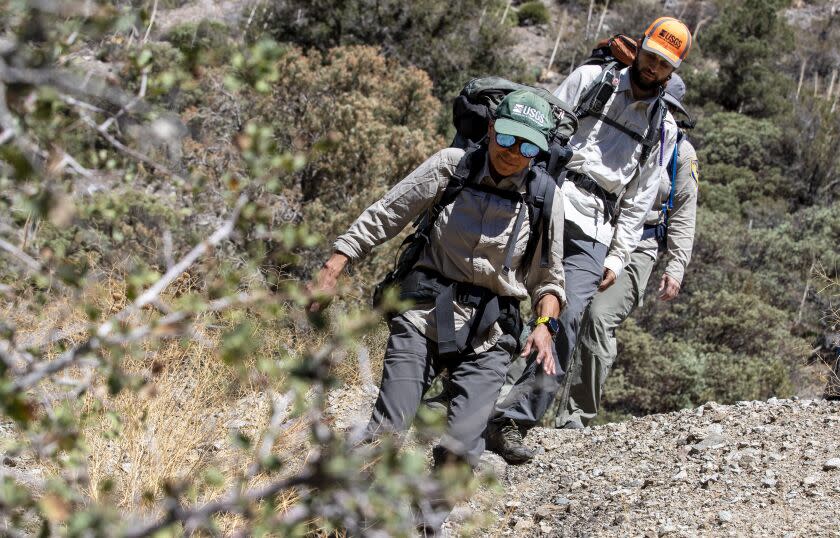
Six biologists shouldered backpack coolers filled with 200 federally endangered frogs on Thursday morning and started trudging uphill across three miles of roadless wilderness on the northwestern flanks of the San Gabriel Mountains.
The inch-long juvenile Southern California mountain yellow-legged frogs were being carried on foot to a pair of remote spring-fed streams running through some of the wildest places left in Los Angeles County. No pavement. No campgrounds. No predatory trout. No trails. No footprints.
The foray was led by U.S. Geological Survey biologists Adam Backlin and Elizabeth Gallegos, who have been assessing the ecological effects of summer crowds and climate-driven heat waves, drought, wildfires and flooding across the mountains just north of Los Angeles for two decades.
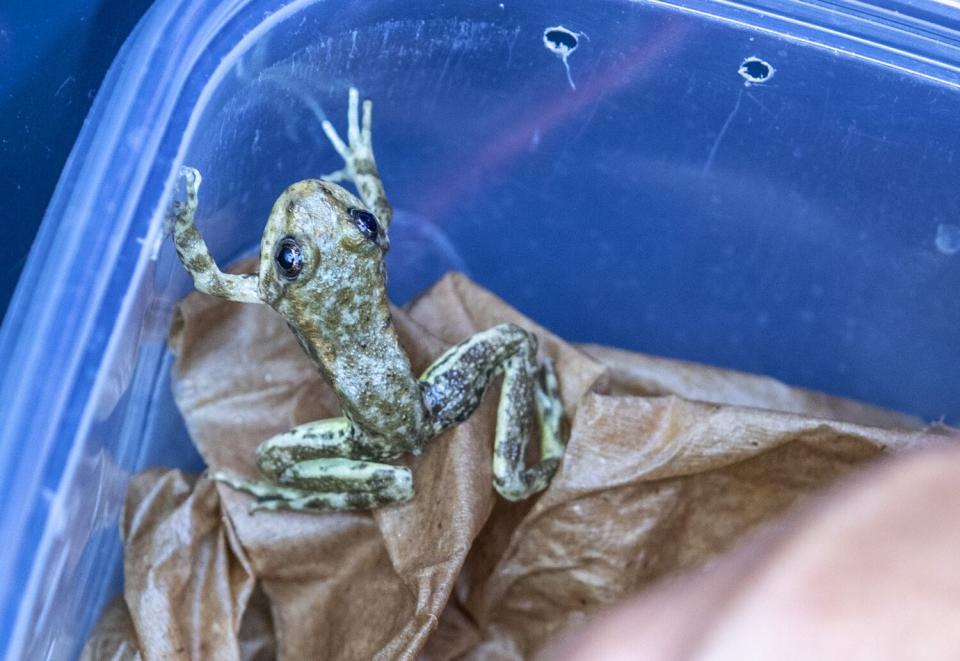
They can attest that in these mountains, the wrinkled slopes, lush canyons and the creatures that inhabit them are all in flux because the climate is changing at an unnerving pace. The most noticeable change has been the disappearance of mountain streams and the effect that has had on yellow-legged frogs — their life’s work.
Like a person who has watched his neighborhood fall into ruin, Backlin said: “A lot of streams have been taken over by recreational activities or simply dried up. As a result, the frog populations also declined or vanished.”
The yellow-legged frog thrived for thousands of years in hundreds of streams cascading year-round down the San Gabriel, San Bernardino and San Jacinto mountains. Today, federal biologists say, about 200 yellow-legged frogs are barely hanging on in isolated wild populations along a handful of hard-to-reach streams.
The rapid disappearance of suitable riparian habitat is compounding the agonizingly complex ecological and regulatory issues facing state and federal wildlife authorities charged with protecting the frog and other native species that will not have time to adapt or avoid extinction.
The biologists originally planned to release frogs into three streams on Thursday. One of them, however, evaporated in August.
Another summer of drought whiplashing into flooding and debris flows off fire-stripped slopes could wipe out the few places left with the creature comforts required to complete the life cycle of the rare — and unusually fussy — amphibian, which spends two years as a tadpole that prefers clear, calm and icy pools shaded by alders, willows and oaks.
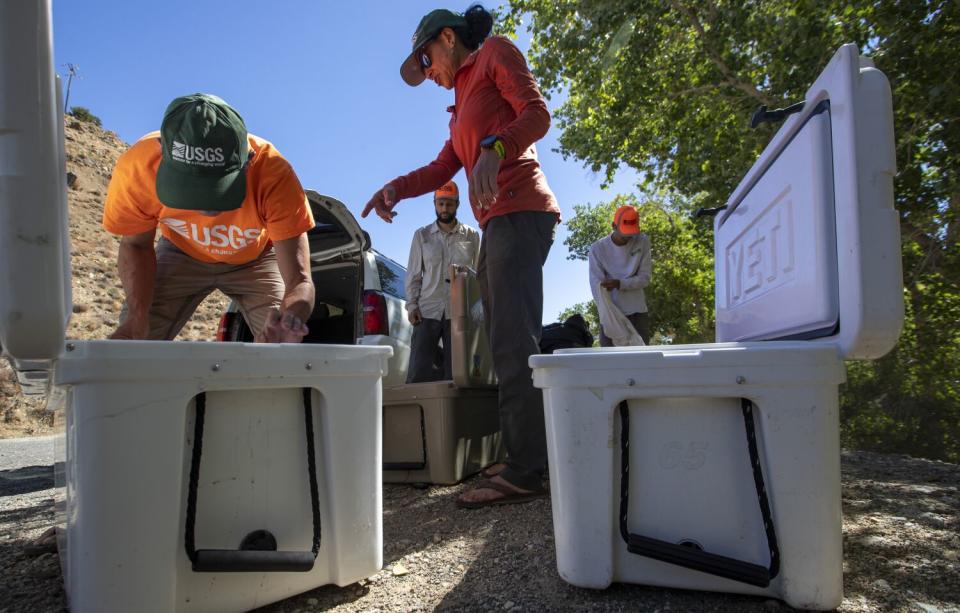
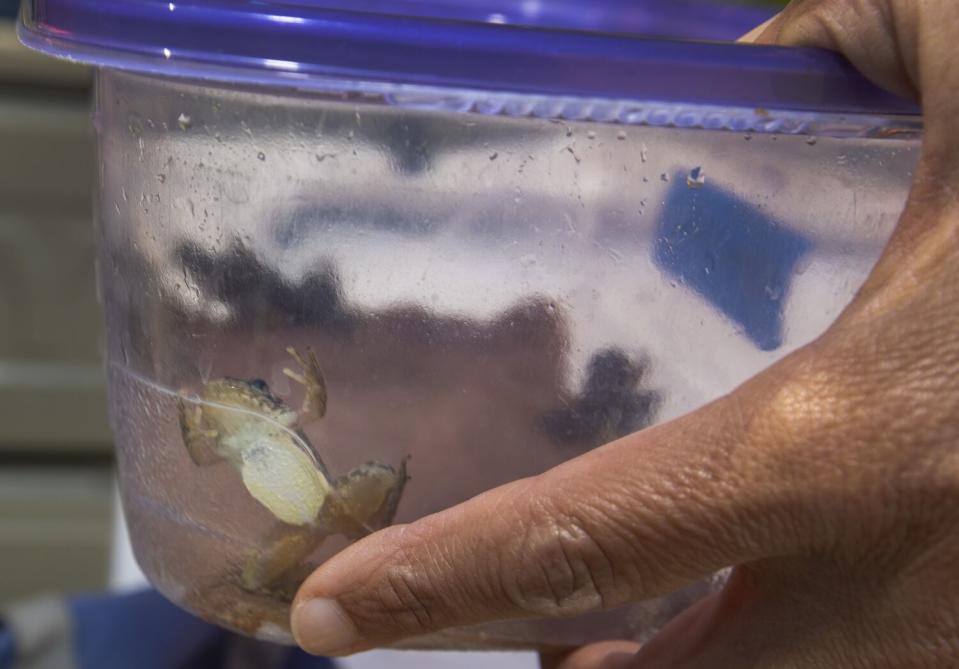
The good news: The amphibians released on Thursday effectively doubled the number of wild yellow-legged frogs. Whether they spur future generations in the drought-hammered Angeles National Forest overlooking the clatter and commotion of 18 million people in cities below remains to be seen.
“Once these frogs were almost everywhere,” Gallegos said. “One of our biggest struggles now is just finding habitat that will still be there in a few years.”
The release was part of a long-term project to create 25 populations of a few hundred to a thousand frogs each.
In the mid-1960s, it would have been hard to imagine an amphibian less likely to face imminent extinction in the range, which is managed by the U.S. Forest Service and includes the San Gabriel Mountains National Monument.
But since then, the frog named for the bright yellow that extends from the underside of its hind legs to its lower abdomen has been decimated by the appetites of nonnative trout, bullfrogs and crayfish, as well as shifting weather extremes. With skin as permeable as a sponge, the frog is also highly susceptible to a fungus linked to amphibians vanishing around the world.
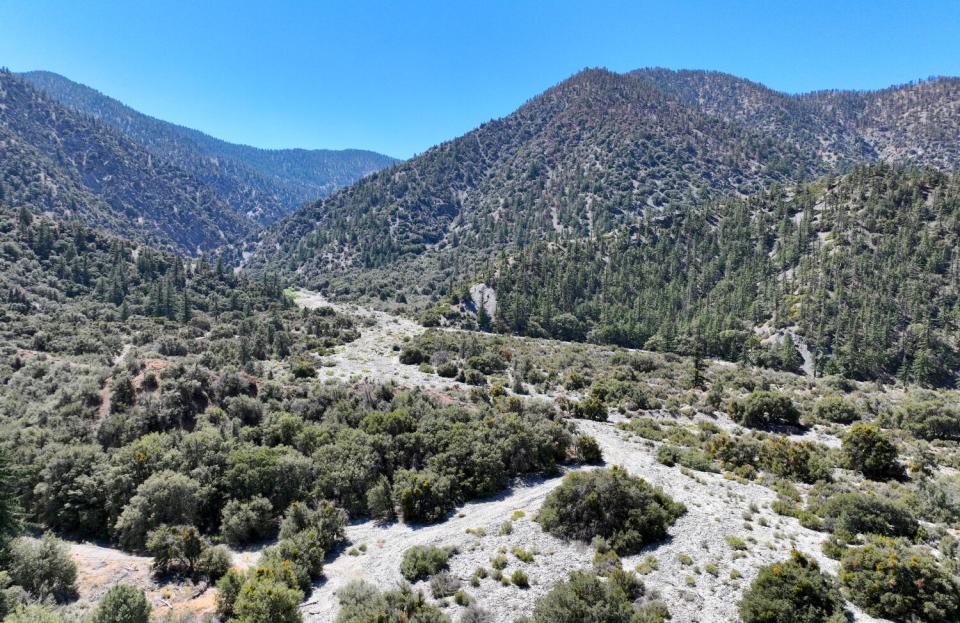
In 2002, when the species was listed under the federal Endangered Species Act, fewer than 100 adult yellow-legged frogs remained in Southern California, giving it the distinction of being one of the rarest vertebrates on Earth.
A subsequent effort to develop a successful captive breeding and reintroduction program became the focus of one of the nation’s most ambitious and frustrating wildlife research projects in recent history.
In their native habitat, the frogs flock to streams gushing with spring snowmelt. Males announce their availability for amphibian romance with a low-pitched underwater bark. In the dead of winter, yellow-legged frogs hunker down beneath a mud bank under a blanket of snow.
Early attempts to breed the frogs had limited success. That’s because the most intimate details of their reproductive behavior remained a mystery until Ian Recchio, the Los Angeles Zoo’s curator of reptiles, discovered how to transform a tiny building into a “frog shack" that mimics the frog’s life cycle of winter hibernation, spring thaw and mating season.
Now, the zoo produces thousands of eggs and tadpoles each year, many of them descendants of frogs rescued from wildfires including the devastating 2020 Bobcat fire, which charred 115,796 acres in the central San Gabriel Mountains.
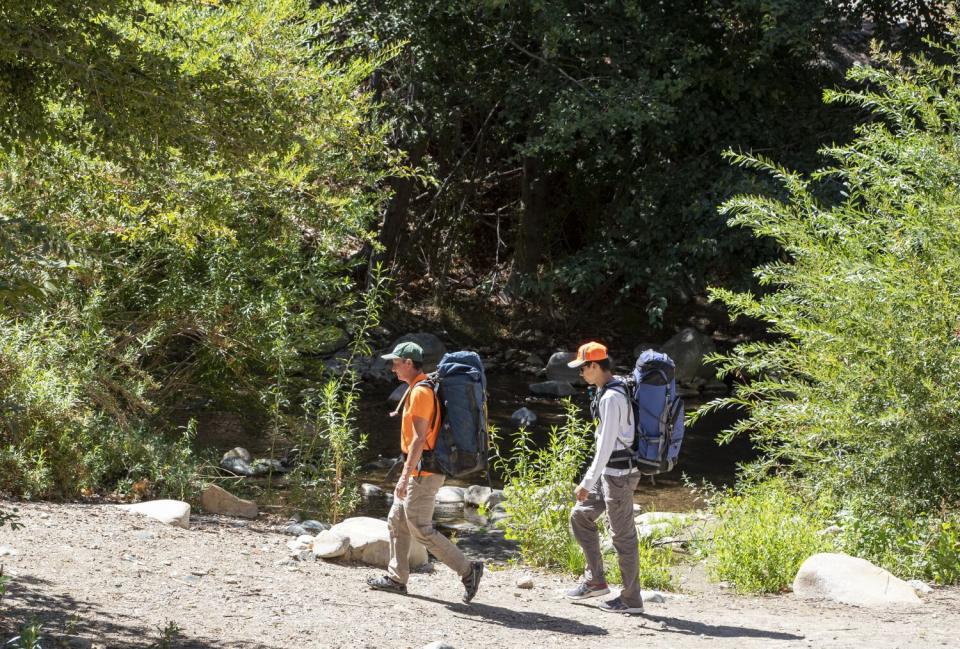
The collaborative recovery effort includes the Los Angeles Zoo; the San Diego Institute for Conservation Research; the Henry Doorly Zoo and Aquarium in Omaha; the U.S. Forest Service; the U.S. Fish and Wildlife Service; the U.S. Geological Survey; and the California Department of Fish and Wildlife.
With the L.A. Zoo’s bounty of new arrivals, the Aquarium of the Pacific and the Santa Ana Zoo installed holding facilities equipped to rear tadpoles into froglets available for reintroduction projects.
On Thursday morning, staff helped load ice chests containing 175 froglets from the aquarium and 25 from the Santa Ana Zoo into vehicles that transported them to the mountains.
But saying goodbye wasn’t easy. A few days earlier, Brett Long, the aquarium's curator of mammals and birds, was only half kidding when he clasped his hands in prayer and said with a smile, “We wish these little froglets all the health and frog-style prosperity in the world when they get to their new homes.”
Amber Soto, who oversees the Santa Ana Zoo’s yellow-legged frogs, said, “This is a species in our own backyard that desperately needs our help. So it’s extremely exciting to lend a hand.”
At the same time, she added, “My big question on Friday morning will be this: Are our frogs OK up there?”
Backlin’s response was reassuring. “The frogs are happy,” he said. “And I’ll be happy, too, if I hike back up there next year to find that both the frogs and the streams are alive and well.
“But I really think,” he added, “that we’re on a roll now.”
This story originally appeared in Los Angeles Times.

